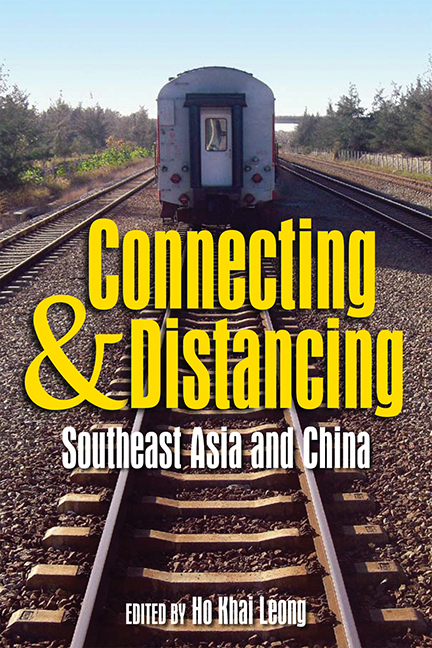Book contents
- Frontmatter
- Contents
- Contributors
- Introduction
- PART I History and Remembrance
- 1 China Meets Southeast Asia: A Long-Term Historical Review
- 2 Philippine-China Connection from Pre-Colonial Period to Post-Cold War Era: An Assessment
- 3 Defining Identity through Remembering the War: Representation of World War II in Chinese Newspapers in the Immediate Post-war Singapore
- 4 Re-positioning “Patriotism”: Various Aspects of Financial Support to China in Penang around 1911
- 5 Perceptions of China for the Overseas Chinese Tea Traders in Colonial Singapore, 1928–58
- 6 Myanmar's Relations with China from Tagaung through Hanthawati-Taungngu Periods
- PART II The Cultural and Chinese Identity
- PART III Economy, Politics and Regionalism
- Index
6 - Myanmar's Relations with China from Tagaung through Hanthawati-Taungngu Periods
from PART I - History and Remembrance
Published online by Cambridge University Press: 21 October 2015
- Frontmatter
- Contents
- Contributors
- Introduction
- PART I History and Remembrance
- 1 China Meets Southeast Asia: A Long-Term Historical Review
- 2 Philippine-China Connection from Pre-Colonial Period to Post-Cold War Era: An Assessment
- 3 Defining Identity through Remembering the War: Representation of World War II in Chinese Newspapers in the Immediate Post-war Singapore
- 4 Re-positioning “Patriotism”: Various Aspects of Financial Support to China in Penang around 1911
- 5 Perceptions of China for the Overseas Chinese Tea Traders in Colonial Singapore, 1928–58
- 6 Myanmar's Relations with China from Tagaung through Hanthawati-Taungngu Periods
- PART II The Cultural and Chinese Identity
- PART III Economy, Politics and Regionalism
- Index
Summary
The study of China-Myanmar relations has largely been undertaken from the Chinese point of view; this can partially be attributed to the fact that more work has been done on Chinese historical sources, and secondly to the general consensus among scholars working on Southeast Asia–China interactions that Chinese sources are more reliable than their Southeast Asian counterparts. It is not the aim of this chapter to counteract the latter view; it argues instead that rather than discrediting certain texts by highlighting their inaccuracies, a more important goal may be to treat these texts as media which reflect the perceptions of their creators and by extension, the people for whom they wrote. Southeast Asian primary texts have only recently been perceived as informative sources, partially because of the language barrier; most Southeast Asian languages, especially Burmese, are not easily learned. There are fewer English translations of Burmese texts than other major Southeast Asian languages. To date, there are only two English translations of Burmese chronicles: the Glass Palace Chronicle (English translation of a relatively brief section of the Hmannan Yazawindawgyi, compiled in 1829) and the Zinmeh Chronicle (the Burmese version of the Chiangmai Chronicle). A number of Burmese chronicles, some still on palm-leaf manuscript (pe sa), remain untranslated. The primary sources used for this paper are: U Kala's Mahayazawingyi, Twinthin Taikwun Mahasitthu's Mahayazawinthit, and the Hmannan Yazawindawgyi. These texts will form the focus of the discussion of Myanmar-China relations.
Other Burmese sources such as the Bagan Yazawin, Yazadharit Ayedawpon, and the Yazawunthalini [New Bagan Chronicle] will be used when necessary to inform discussion of a particular theme or event. Even though most of these chronicles can only be dated to the eighteenth and nineteenth centuries, descriptions of Burmese perceptions of their relations with Tarup (China) extracted from these sources represent invaluable reflections of indigenous views of their foreign neighbour. These views can contribute to a more balanced observation of Myanmar-China relations over a period of several centuries from Tagaung (mid-first millennium CE) to Hanthawati-Taungngu of the sixteenth century.
- Type
- Chapter
- Information
- Connecting and DistancingSoutheast Asia and China, pp. 115 - 134Publisher: ISEAS–Yusof Ishak InstitutePrint publication year: 2009



